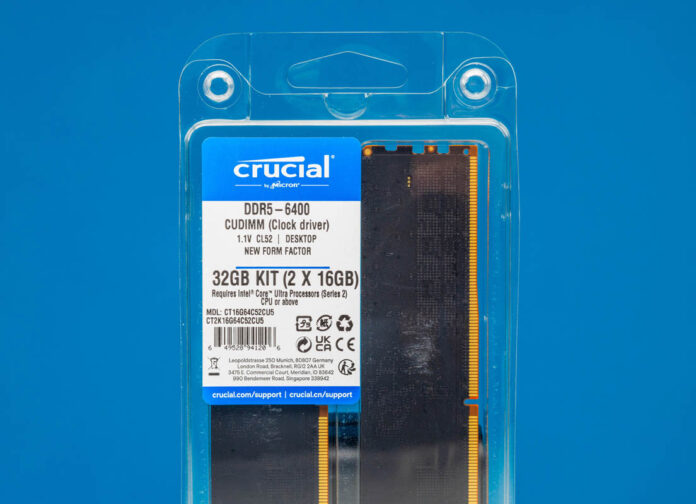2024-11-10 14:30:00
www.servethehome.com
We probably need to have one of these. Recently, memory makers started to take a technology that we have seen for years on the server side, and bring it to the desktop and mobile platforms. The CUDIMM or CSODIMM adds a “C” for clocked, and with it comes some new hardware.
The Difference between a Standard DIMM and a CUDIMM or CSODIMM
The big difference between the CUDIMM and COSODIMM and their UDIMM/ SODIMM counterparts is the addition of a clock driver. Just to see the difference, here is the front and back of Our Top 96GB DDR5-5600 SODIMM Kit Crucial 2x 48GB Kit.
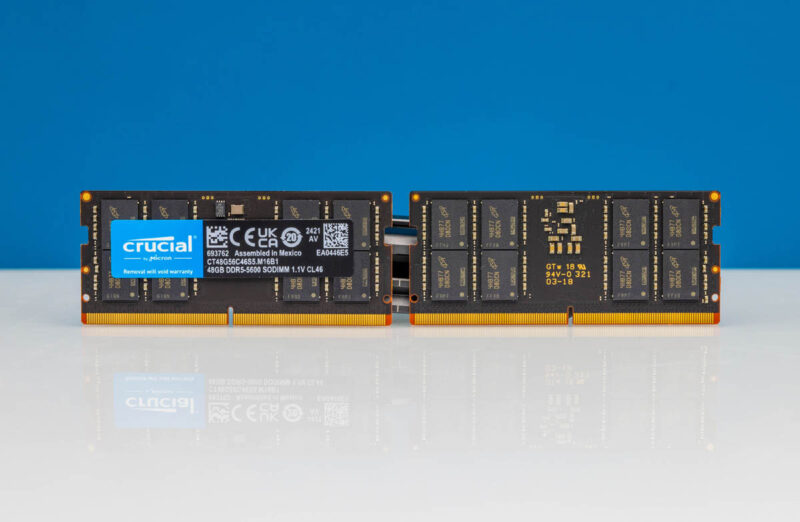
Here is the Crucial DDR5-6400 CSODIMM kit that is 2x 16GB. Of course, there is a big difference on the right hand side since the 48GB modules have DRAM chips on the back, but if you look at the front, you will spot the difference.
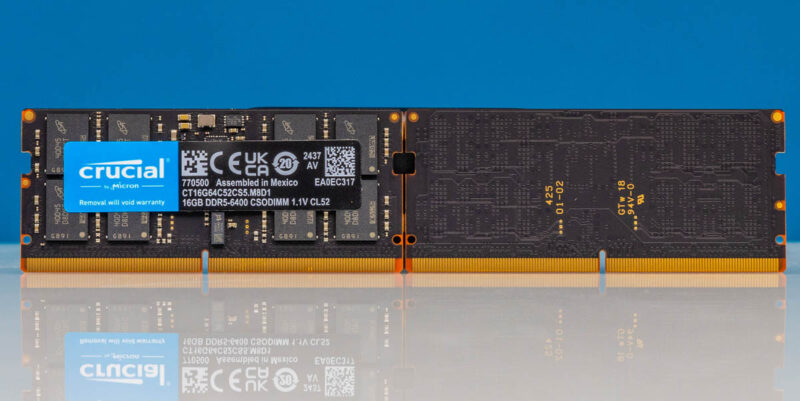
Here is a close-up of the front of the CSODIMM. You can see in the middle under the label that there is a Montage clock driver chip.
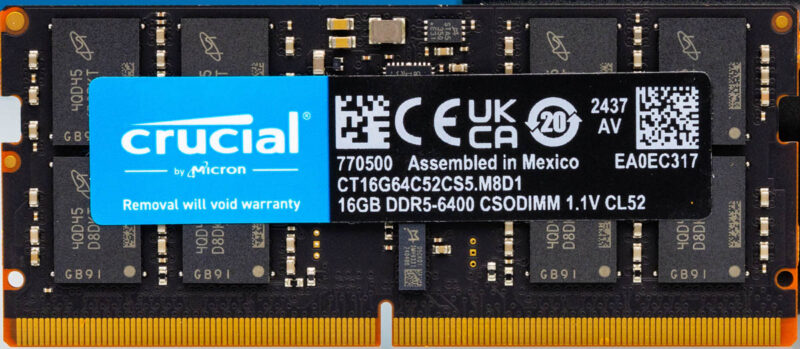
With the new clock driver DIMMs, you will see it on the label along with CSODIMM/ CUDIMM. Here is the CSODIMM package label.
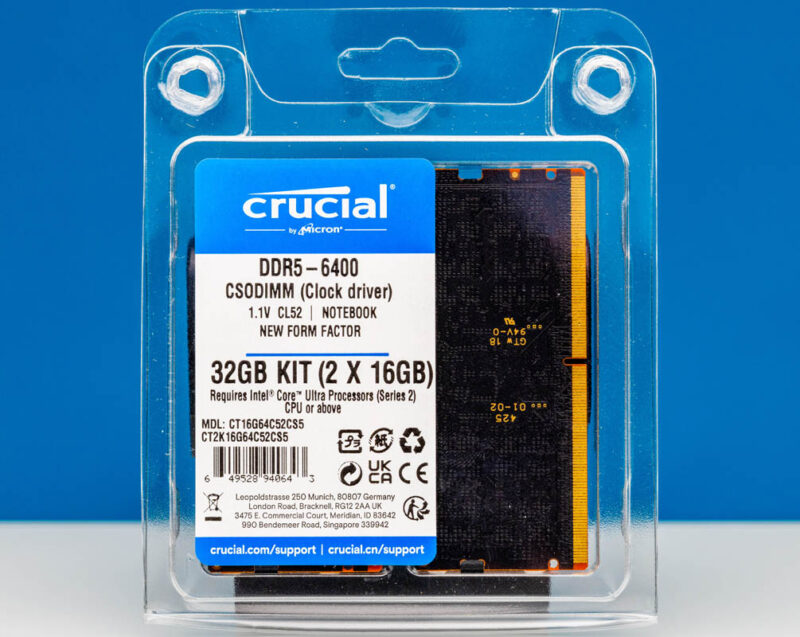
On the CUDIMM side, we do not have a normal DDR5 DIMM in the CMS stright-on, but here is the label side of a Micron ECC UDIMM.
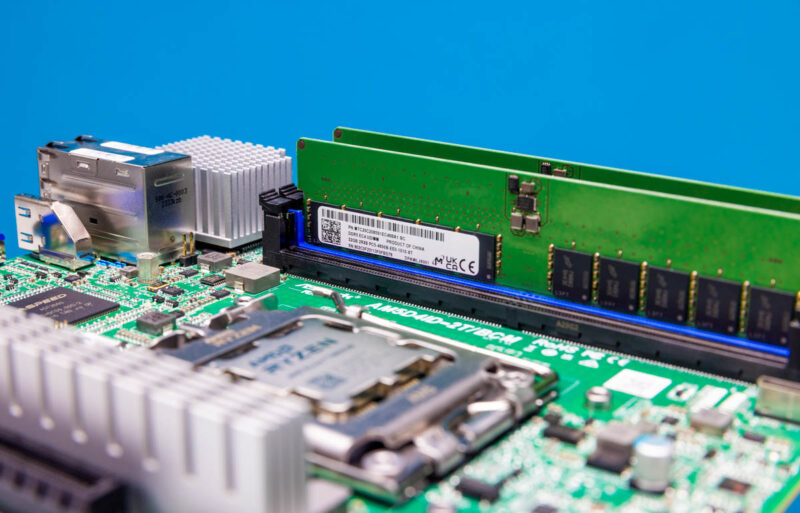
Here is the Crucial CUDIMM front and back.
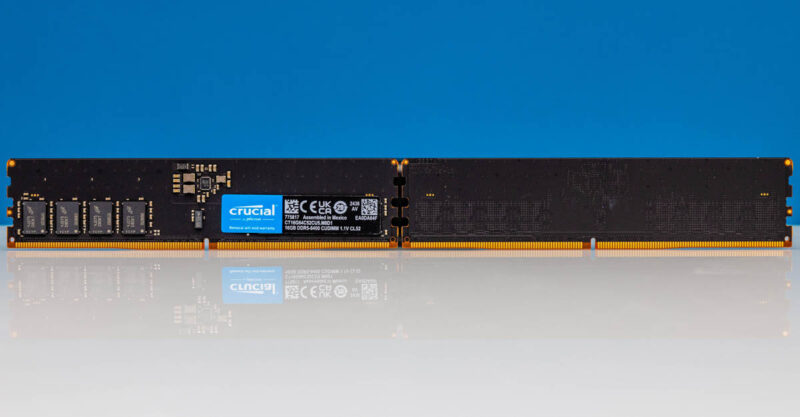
When we isolate the DIMM, we can again see the Montage clock driver in the center.

If you were thinking that the DDR5 RDIMMs used in servers have something similar there, you would be correct. Here is a shot from our Why DDR5 is Absolutely Necessary in Modern Servers piece:
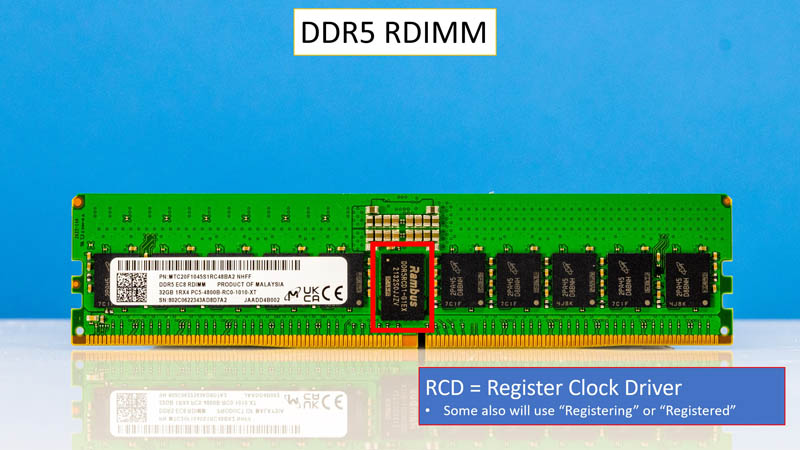
Of course, the CUDIMM is also labeled, along with the fact that you need Intel Core Ultra Processors Series 2 or newer to use them.
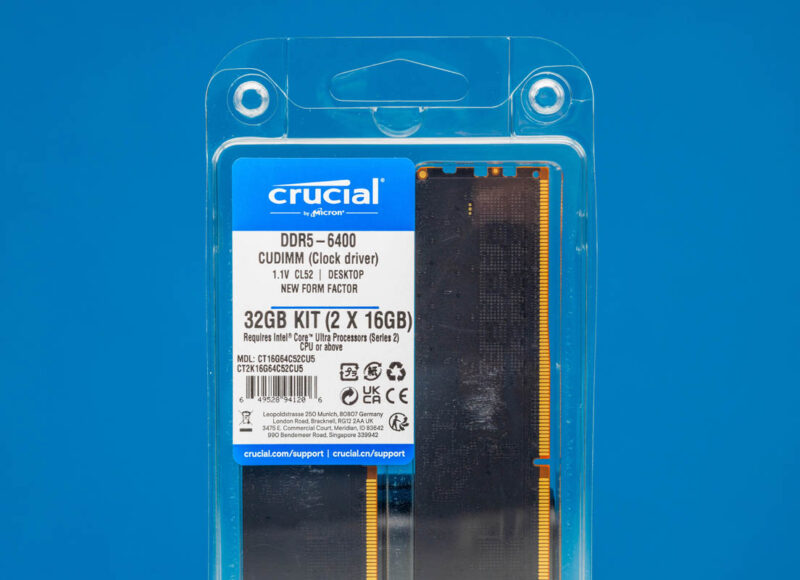
Most folks will still use non-CUDIMMs. In fact, we showed some non-CUDIMM DDR5-6400 Crucial Pro DDR5 memory in this week’s AMD Ryzen 7 9800X3D Launch article.
Final Words
Adding a clock driver for better clock integrity is nothing new. Servers have been doing something similar for years. Still, as we get to higher memory speeds, this is something we will see more of. One of the reasons UDIMMs historically have not had clock drivers is because it is an extra component that adds cost. In the DDR5 generation, the memory vendors are likely happy since they added the PMICs as well as in many cases the clock drivers. In the tug-o-war between memory modules and the CPUs and motherboards, the DDR5 memory vendors are winning extra components being placed on their modules.
Support Techcratic
If you find value in Techcratic’s insights and articles, consider supporting us with Bitcoin. Your support helps me, as a solo operator, continue delivering high-quality content while managing all the technical aspects, from server maintenance to blog writing, future updates, and improvements. Support Innovation! Thank you.
Bitcoin Address:
bc1qlszw7elx2qahjwvaryh0tkgg8y68enw30gpvge
Please verify this address before sending funds.
Bitcoin QR Code
Simply scan the QR code below to support Techcratic.

Please read the Privacy and Security Disclaimer on how Techcratic handles your support.
Disclaimer: As an Amazon Associate, Techcratic may earn from qualifying purchases.











































![Lost Lands 8: Sand Captivity CE [03] Let's Play walkthrough – Part 3](https://techcratic.com/wp-content/uploads/2024/11/1731796040_maxresdefault-360x180.jpg)












![CIA Whistleblower Sitting On Biggest UFO Secrets [Lue Elizondo Interview]](https://techcratic.com/wp-content/uploads/2024/11/1731796200_maxresdefault-360x180.jpg)




![UFO UAP SIGHTING [MUFON CASE] USA 2023](https://techcratic.com/wp-content/uploads/2024/11/1731759426_maxresdefault-360x180.jpg)
